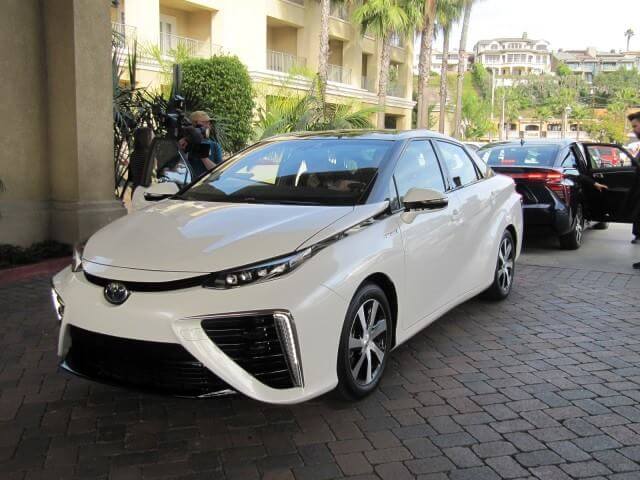Toyota’s cars are an undeniable piece-of-art in terms on quality and durability. Everyone who has owned one knows that this Japanese maker approaches untiringly how to deliver a car that stands when others fall, and that’s enough virtue that makes Toyota what it is right now.

The Japanese put a step forward, innovating the hybrid cars segment by developing the Mirai (translated from Japanese, its means ”future”), one of the first hydrogen fuel-cell vehicles to be sold commercially. A lot of people are concerned about the real danger of the climatic change globally, and Toyota is creating the ”future” of cars, or probably one of the dozens of alternatives that will exist in a relative near future.
The Mirai was a project which started officially in 1992 with the beginning of an FVC technology research and takes physical form late in November 2014 at Los Angeles Auto Show. The intention of this release of providing an eco-friendly alternative to the traditional petrol engine. And for the wellness of people and topcoat our planet, we expect to see ASAP cars running completely green and with no emission at all, capable of performing and delivering that adrenaline we felt with petrol engines.
Let’s review this representative of the future.
Powertrain and Performance
The 2016 Mirai uses a Toyota Fuel Cell System (TFCS) dedicated to the development of both fuel cell and hybrid technology. This means that the car runs solely on hydrogen and its only emissions are water, making it in a 0% CO emission car.
”Only emissions are water”. The instant thought, about this is a floppy car. A really boring one to drive, but the car doesn’t. It has its own charm. The Mirai’s powertrain can accelerate standstill to 60mph in 9 seconds. Sure, is not a speed monster and isn’t even close to one, but this car is intended to at the eco-friendly segment, and as consideration, is decent enough. Also, the refuelling of the Mirai is quicker than standard plug-in hybrids. This Fuel Cell car refuel in just 3 to 5 minutes and with a total range of 312 miles on a full tank. That’s impressive.
The hybrid system is used in this car along with the fuel cell system. An electric motor, a power control and main batteries are powered by the fuel cell technology and the electric traction motor deliver up to 152 hp and 247 lb-ft of torque.
Design Line and Interior
The concept of the car is intended to has a futuristic approach and it really emanates that. The front fascia is quite good and the sexy LED headlights with a horizontally elongated grille with two air intakes alike blended with two vertical LED foglights look incredible with that chrome accent. The hood and the side panels are quite nice as well, but the problem comes when you are reaching the rear of the car. It takes a really weird form, similar as the Toyota Prius (reviewed weeks ago). Probably the only flaw or, at least, a ‘not-successful’ detail about the car is the form it gets from the rear doors to the rear end.
However, the interior is impressive. With the usual trends in interior design by Toyota: a simple, minimalist, and roomy-rich sensation. Seats are decent and the overall material found on it too. The highlight here is the incredible amount of technology and futuristic feeling you got when you are inside. Inside the Mirai, you can expect found three interior screens matted in the car. Useful, informative, and entertainment are the functions of the screens combined with the control cluster.
The Bottom Line
The 2016 Mirai perhaps is going to be one of the best cars in terms of efficiency in future years. By now, there are just assumptions, due to the low quantity of hydrogen fueling system. We need way more infrastructure and organization in a lot of countries to make this project viable.
Starting price at US$57.500.
About the author
William Getty lives and breathes cars. He started driving cars as a 12 year old on the racetrack with his dad. Since then cars has always been a big part of Williams life.
In his garage you can find his beloved 2005 Ford Mustang, as well as a 2020 Audi A3.
